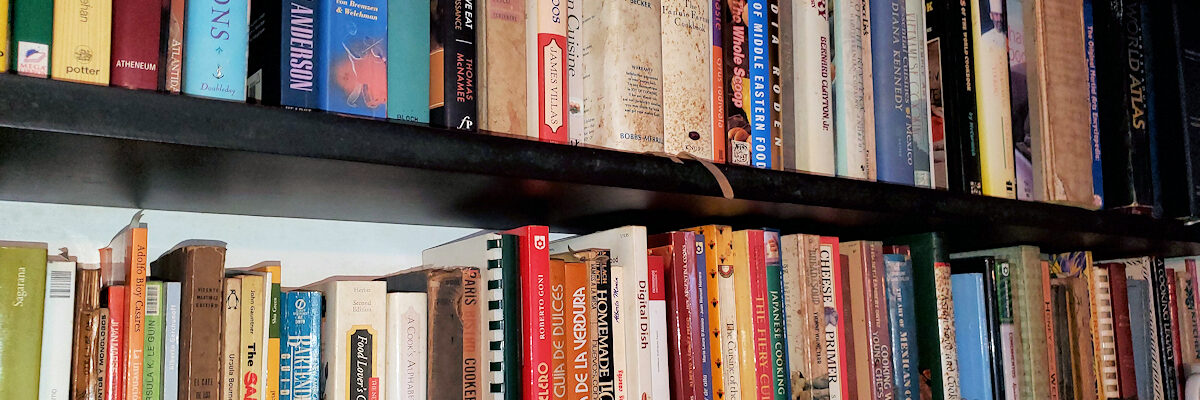It’s been awhile, but thought I’d throw in some of what I’ve been reading recently in the food world. This is, by no means, either everything I’ve been reading, nor even all of the food related stuff, but a Quintet for Quarantine that I think are worth exploring for those of you who enjoy cooking and food.
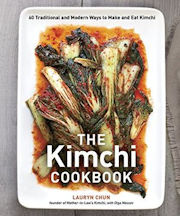 The Kimchi Cookbook: 60 Traditional and Modern Ways to Make and Eat Kimchi by Lauryn Chun
The Kimchi Cookbook: 60 Traditional and Modern Ways to Make and Eat Kimchi by Lauryn Chun
One of the things that often drives me crazy is when someone lectures me on a particular food, particularly when they don’t know what they’re talking about. I was in the early stages of reading this book, and trying out some of the different recipes, and talking to some fellow foodies about a particular kimchi made fresh, to be eaten within a few days. One of them interrupted to give me a five minute diatribe on “real kimchi”, which, according to him, is only made with Napa cabbage, a particular process, buried in a clay jar in the yard, and aged for a minimum of six months, often several years. He was not to be deterred in his righteousness. He’s not Korean (neither am I), and he’s just plain wrong.
This is a fantastic book, introducing western readers to the whole subject of kimchi (a word that literally translates to “soaked vegetables”, with the intent, as now I understand it, to involve some level of brining, and often fermentation). It covers different styles of kimchi, talks about their different histories and uses, different vegetables that are both traditionally, and in modern day, used in kimchi making, and, a whole section of fairly modern recipes that make use of different types of kimchis in some very creative ways.
I’ve already tried making three different sorts of kimchi that aren’t the one my friend expounded upon, and they’ve all turned out brilliantly. If you like fermented vegetables, and some spice, this is a must read book.
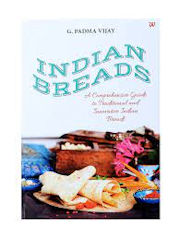 Indian Breads: A Comprehensive Guide to Traditional and Innovative Indian Bread, by G. Padma Vijay
Indian Breads: A Comprehensive Guide to Traditional and Innovative Indian Bread, by G. Padma Vijay
Talk about comprehensive… well, I think so. I didn’t count, but it seems like there are a couple of hundred different bread recipes, of varying styles, from different regions of India. Many of the recipes… and this is predominately a recipe book rather than a book that really talks about the breads… are simply variations on a theme – different fillings or seasonings for the same bread base. Still, it’s nearly overwhelming. At the same time, I had in mind a personal favorite crisp flatbread, pappadams, and they’re not included at any point in the book that I could find. Maybe the author doesn’t consider them a bread. But truthfully, that’s a small quibble and doesn’t take away from the array of delicious breads that I have no idea where to start on playing around with. As a novice when it comes to Indian breads, I’d have liked to have something like a… “let’s start here and get you going” section of ideas for basics. But it may come down to opening to a random page and giving it a shot.
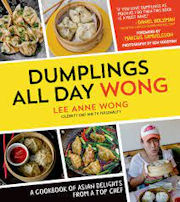 Dumplings All Day Wong: A Cookbook of Asian Delights From a Top Chef, by Lee Anne Wong
Dumplings All Day Wong: A Cookbook of Asian Delights From a Top Chef, by Lee Anne Wong
It’s dumplings. That by itself is worth the four star rating I give it. And I always liked Lee Anne on Top Chef. The book is laid out well, I’m not going to say it’s comprehensive – it’s a sort of overview of a decent number of styles of dumplings, each with a classic recipe and then various of her creative interpretations. If you’re looking for a book that will give you an insight into traditional styles of dumplings, this isn’t it, this is more for the adventurous cook, who likes to try new things and see how it goes. It’s not geared towards inexperienced cooks either – there’s an expectation that you understand cooking terminology and don’t need someone to show you how to chop an onion or mince a garlic clove.
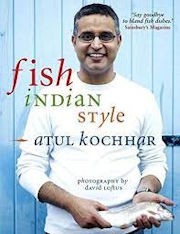 Fish, Indian Style, by Atul Kocchar & David Loftus
Fish, Indian Style, by Atul Kocchar & David Loftus
I was introduced to Chef Kocchar through the British show Million Pound Menu, a sort of Shark Tank for British restaurateurs. Kocchar was one of the investors who was on the “panel”. I liked his approach to food and restaurants, and thinking he might have some interesting books out there on things like restaurant management, I spotted this book, plus his Curries of the World. I’ve read both, and liked both, though this one stands out for me because it’s a topic that I really haven’t ever given any thought to. I know there are Indian fish dishes out there, and now and again I’ve even ordered one. But they’re usually a minimal part of the menus at Indian restaurants, and not what I, at least, think of when someone suggests eating Indian food. I really like the way this book is organized, and his approach to the different regions of the country, the styles of cooking, and the history of the dishes. The recipes are written with clarity and range from simple to complex, but all explained in a way that any good cook ought to be able to follow. The curry book takes much the same approach, but I felt like he didn’t have the same insight into things like the history of the dishes, or the local traditions, that he had for Indian cuisine. Still, also worth a read.
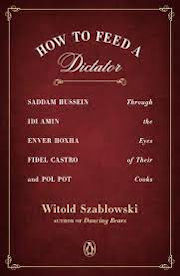 How to Feed a Dictator: Saddam Hussein, Idi Amin, Enver Hoxha, Fidel Castro, and Pol Pot Through the Eyes of Their Cooks, by Witold Szablowski, Antonia Lloyd-Jones
How to Feed a Dictator: Saddam Hussein, Idi Amin, Enver Hoxha, Fidel Castro, and Pol Pot Through the Eyes of Their Cooks, by Witold Szablowski, Antonia Lloyd-Jones
Quite the topic for a book, no? And it’s exactly what it purports to be. It’s a series of interviews with the personal chefs for each of these five dictators. And no topic was off-limits, as the chefs describe not only how they got their positions, but what was expected of them, as well as personal insights into personalities and proclivities. It’s hard not be find it fascinating. I can’t quite call it a food or cookbook, because it’s really more of a combination biographies and autobiographies, but there’s a decent amount of description of foods, as well as each chef shares a recipe for a personal favorite of their former boss. And, if you like history, it’s certainly an intriguing topic.
